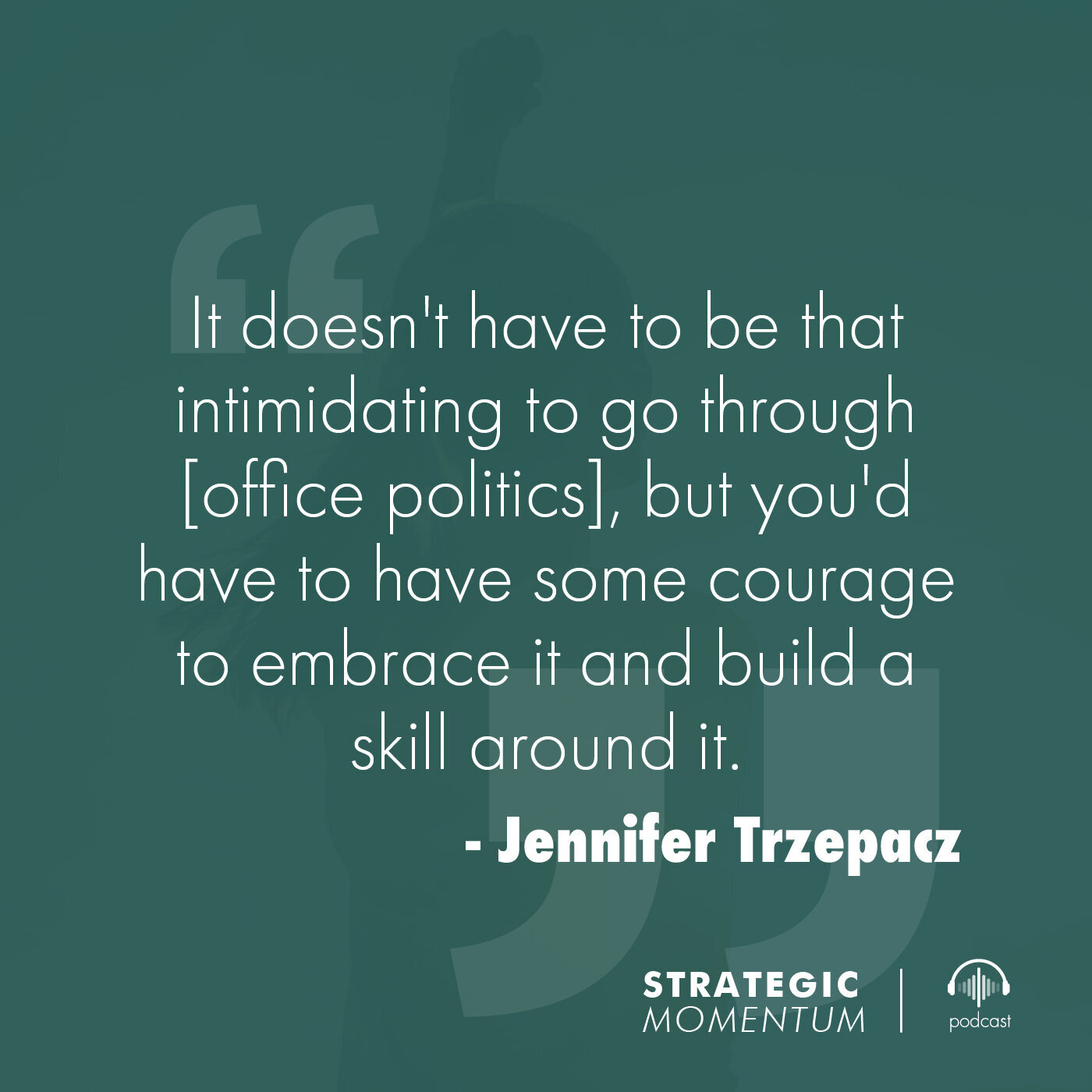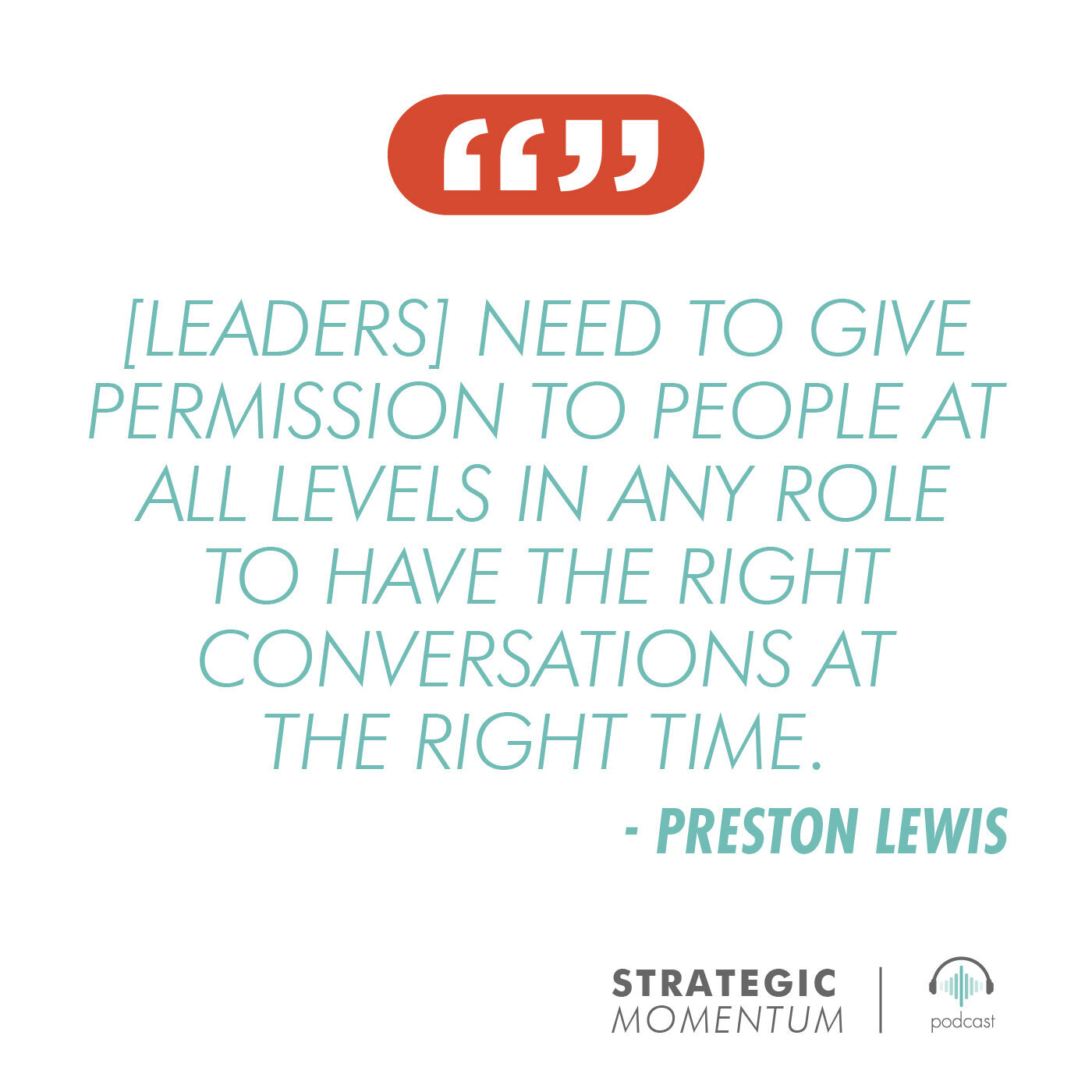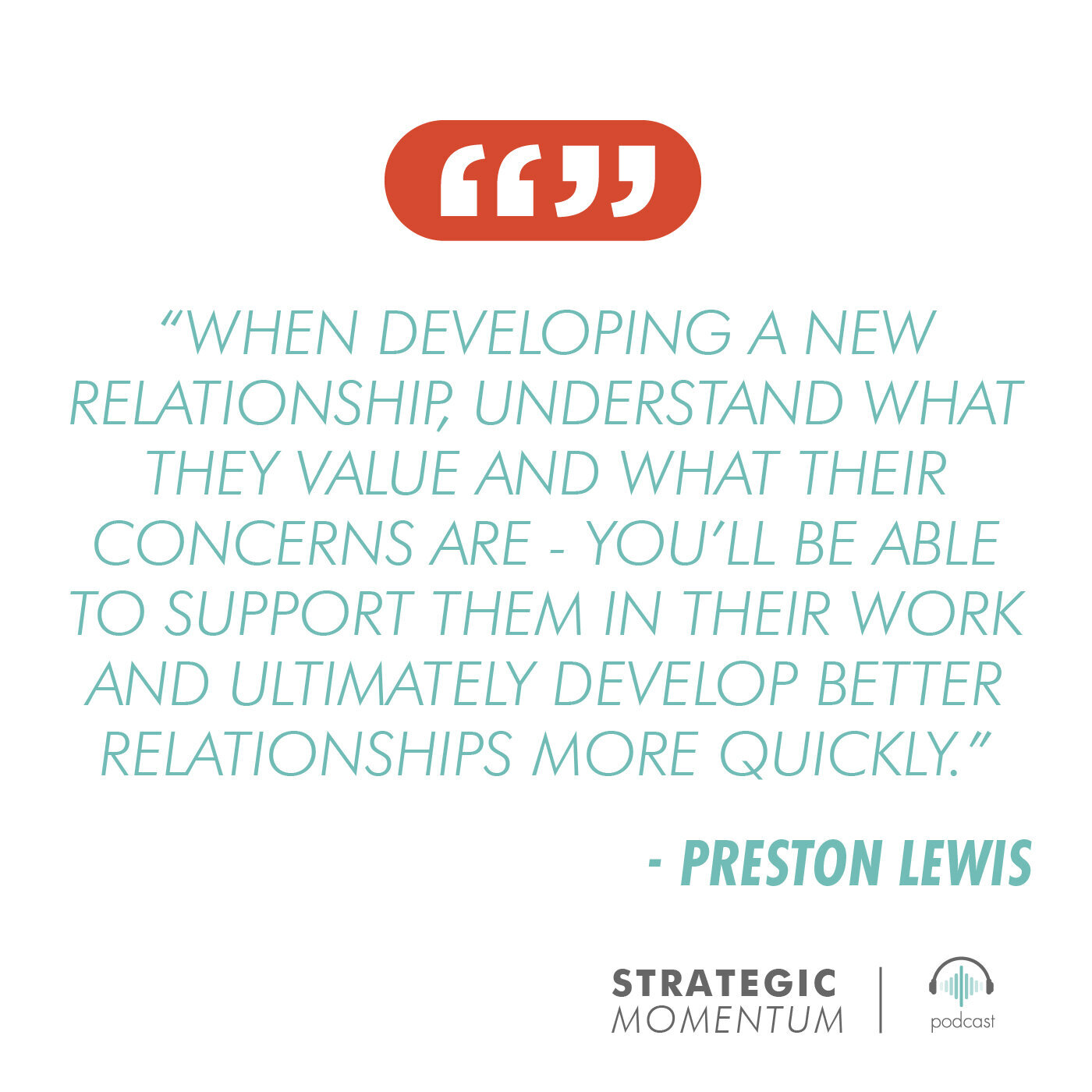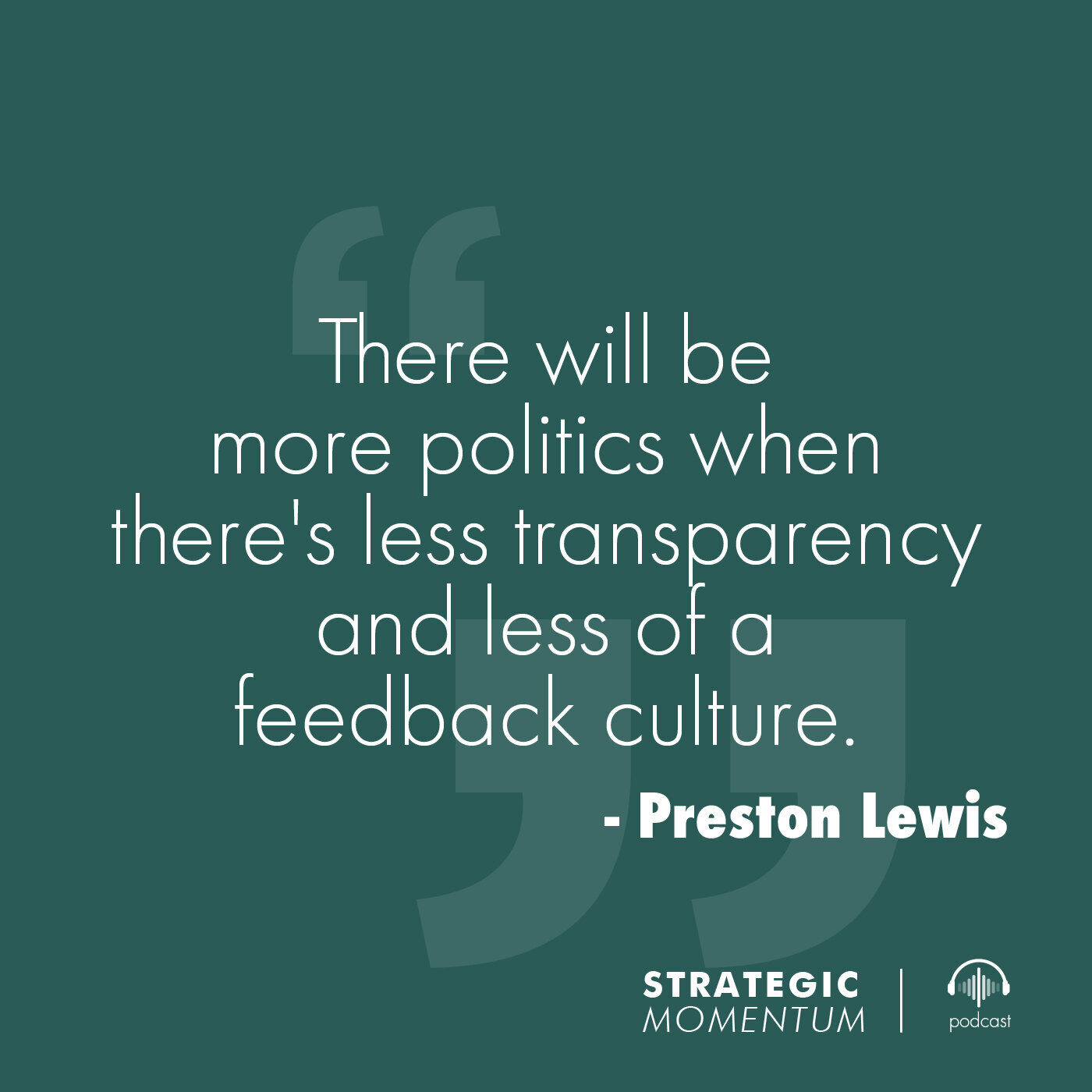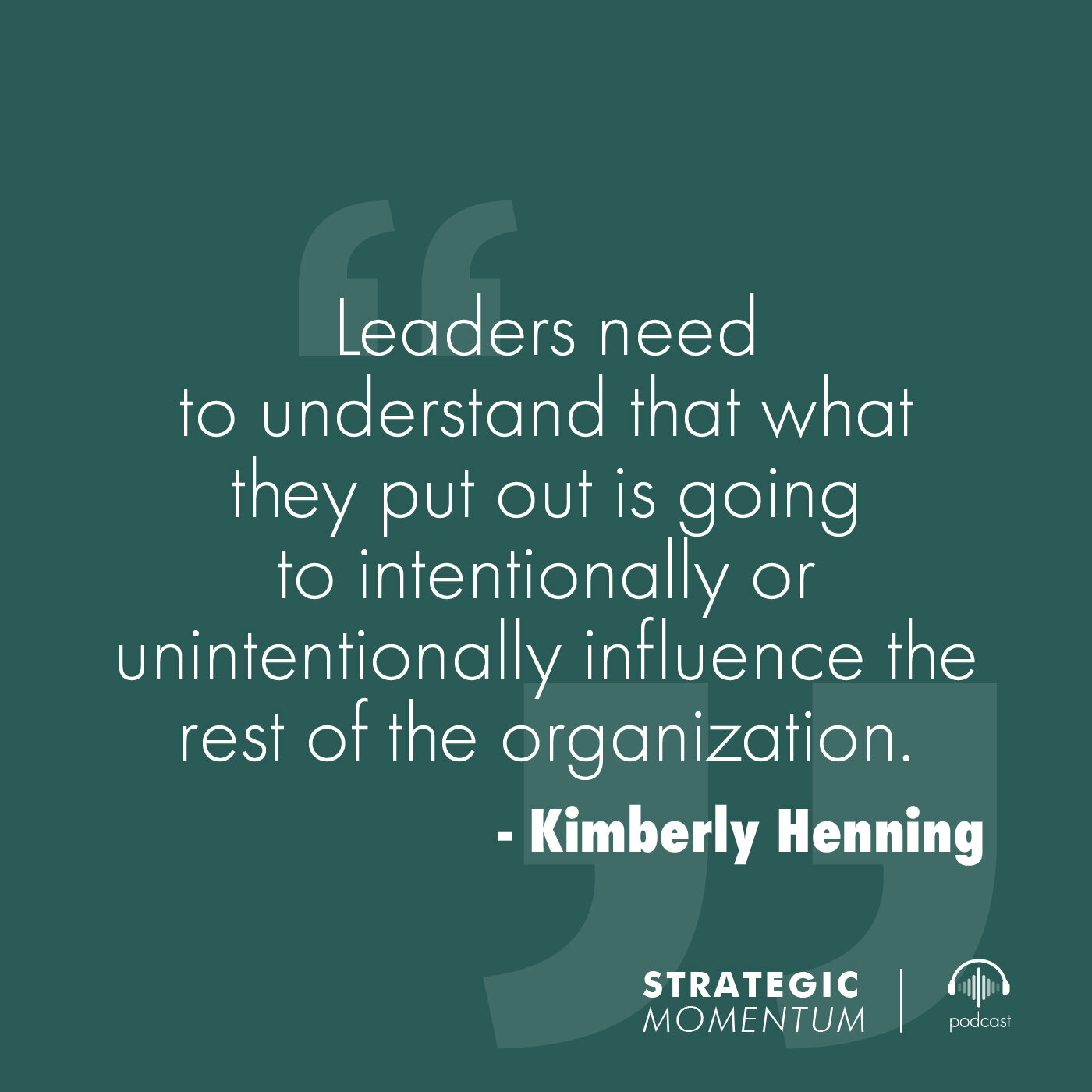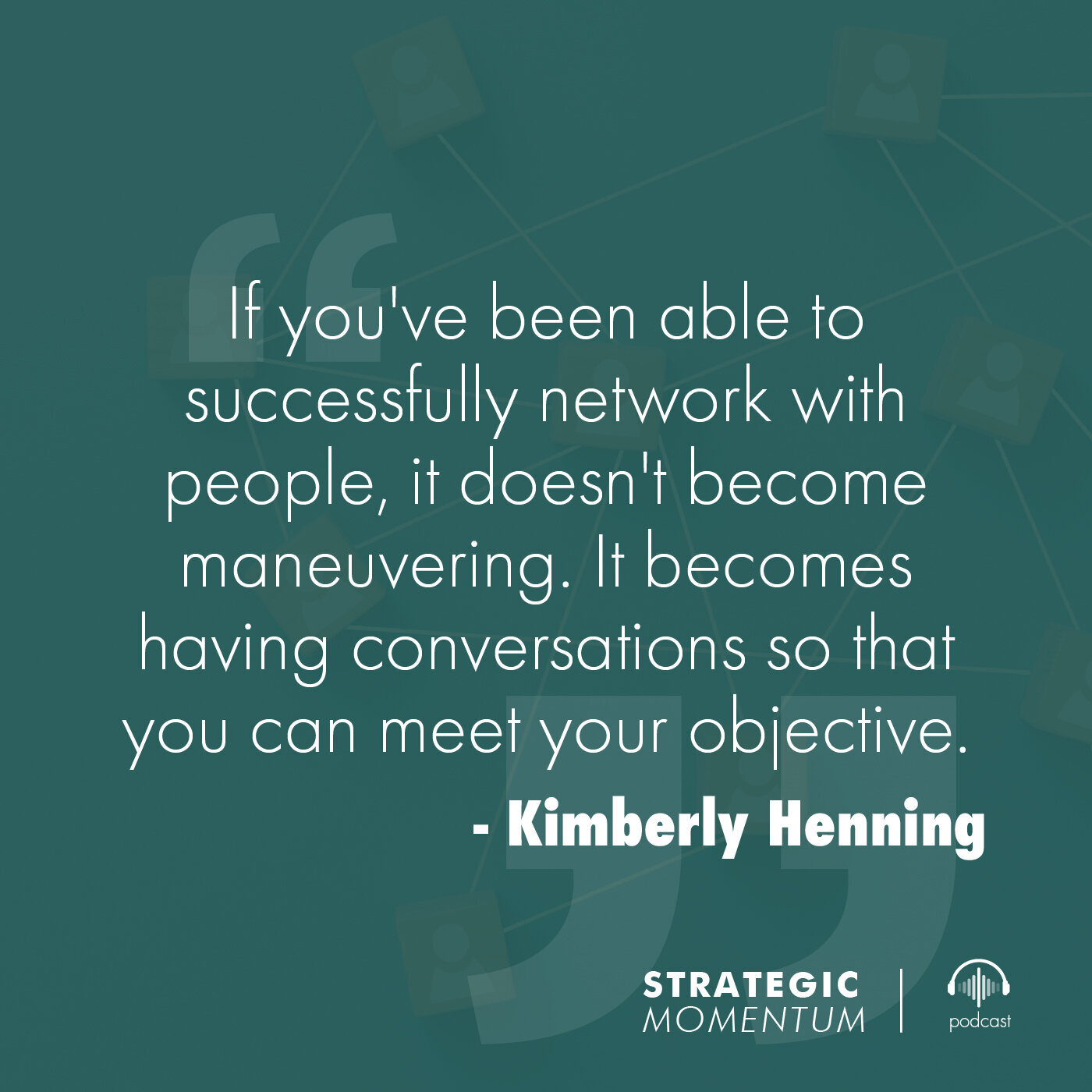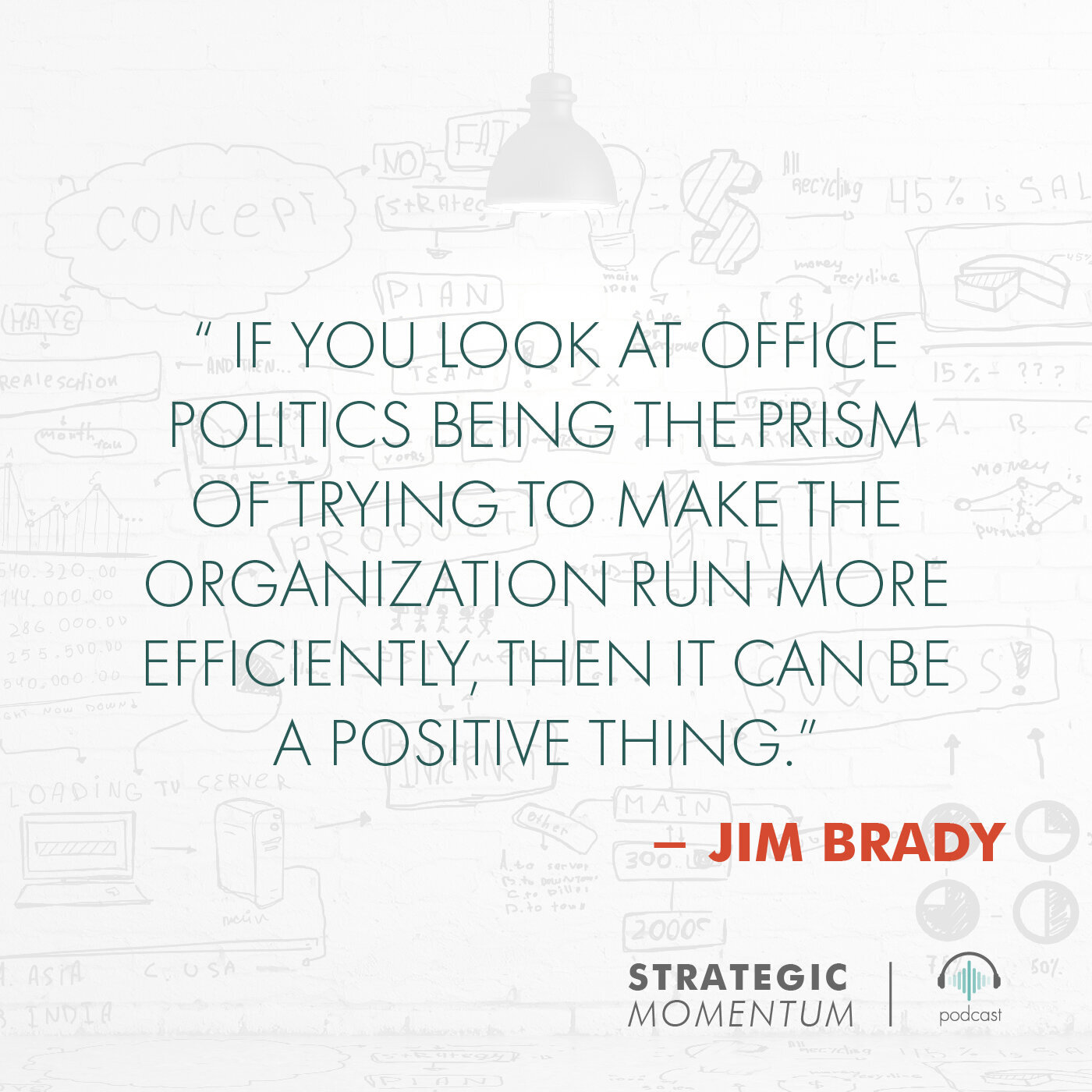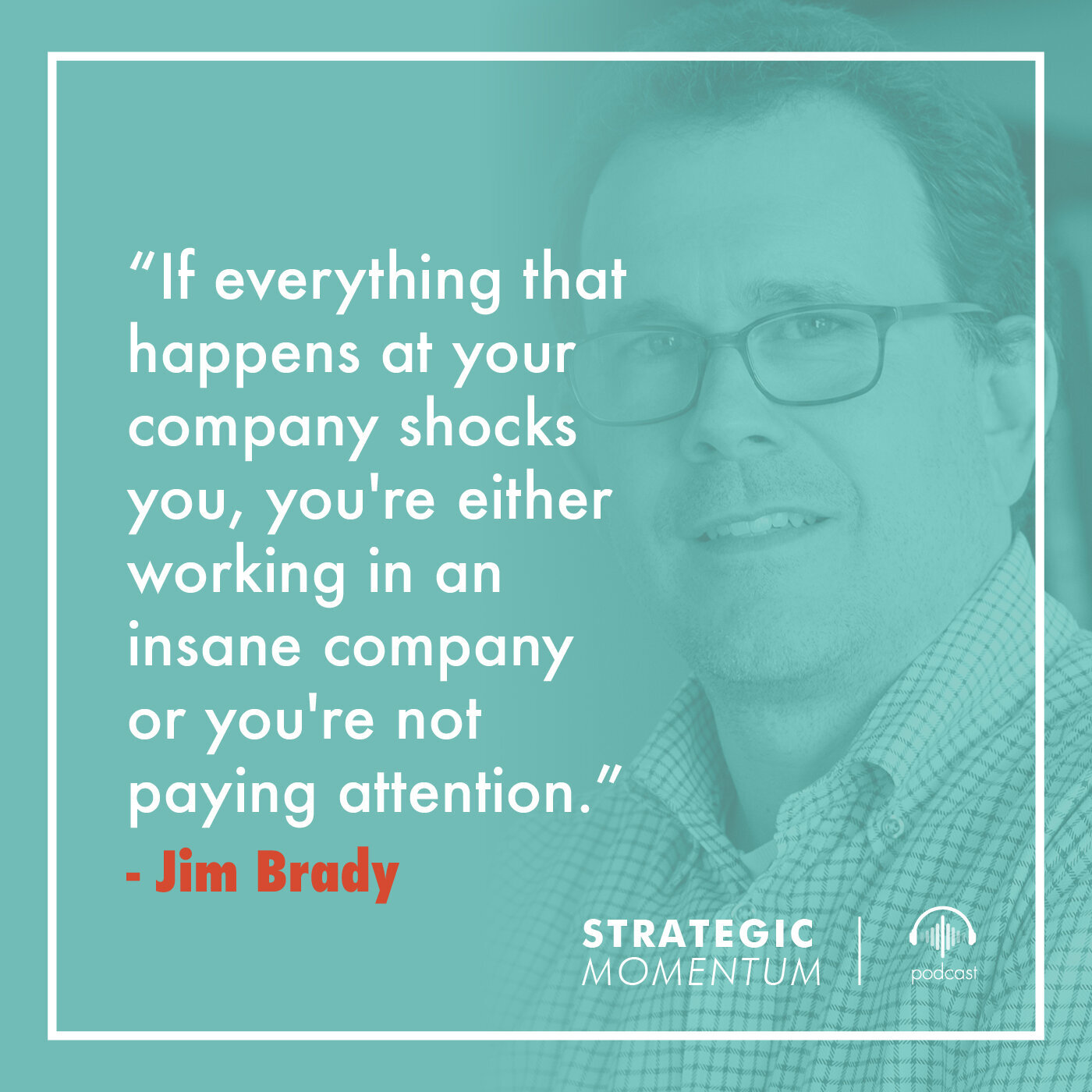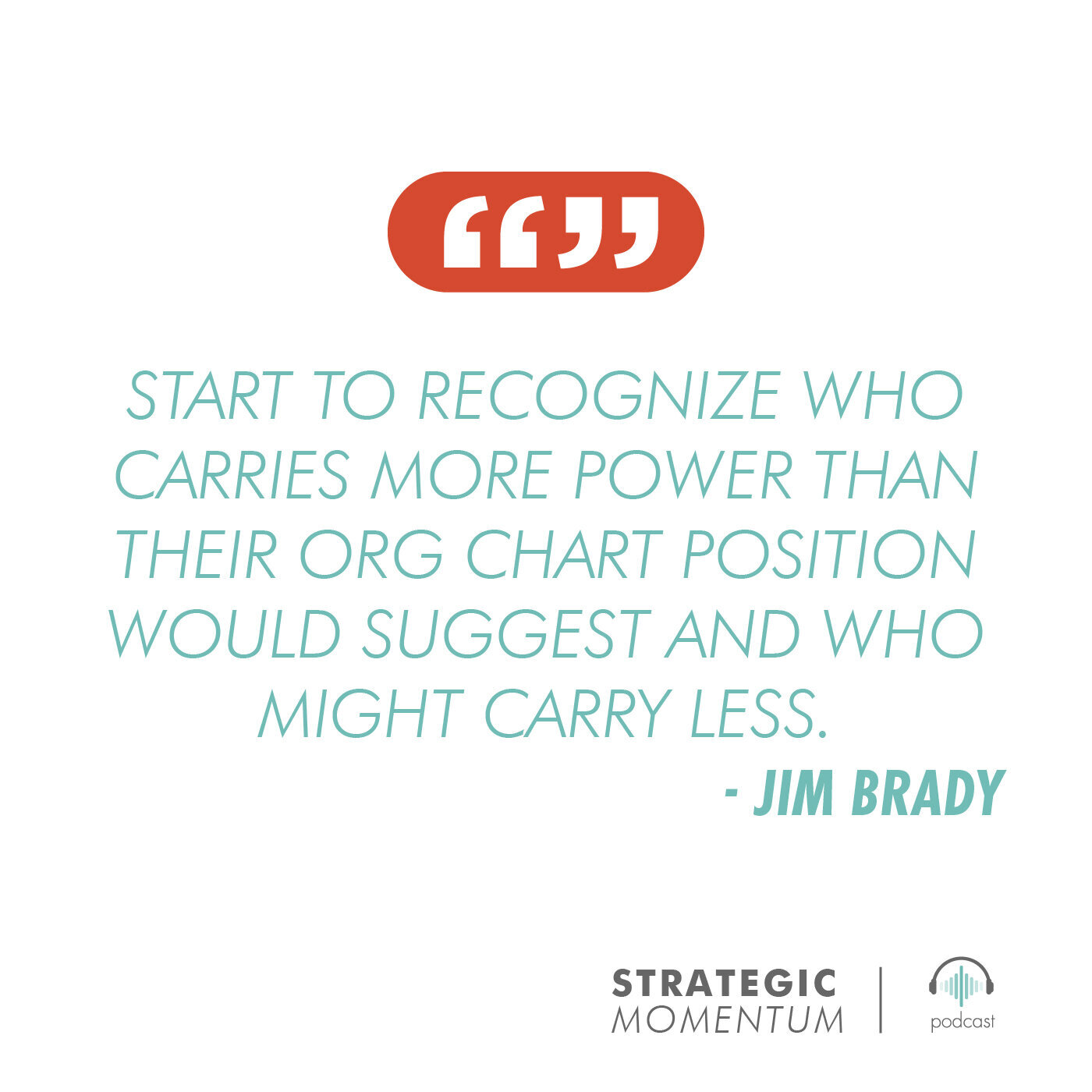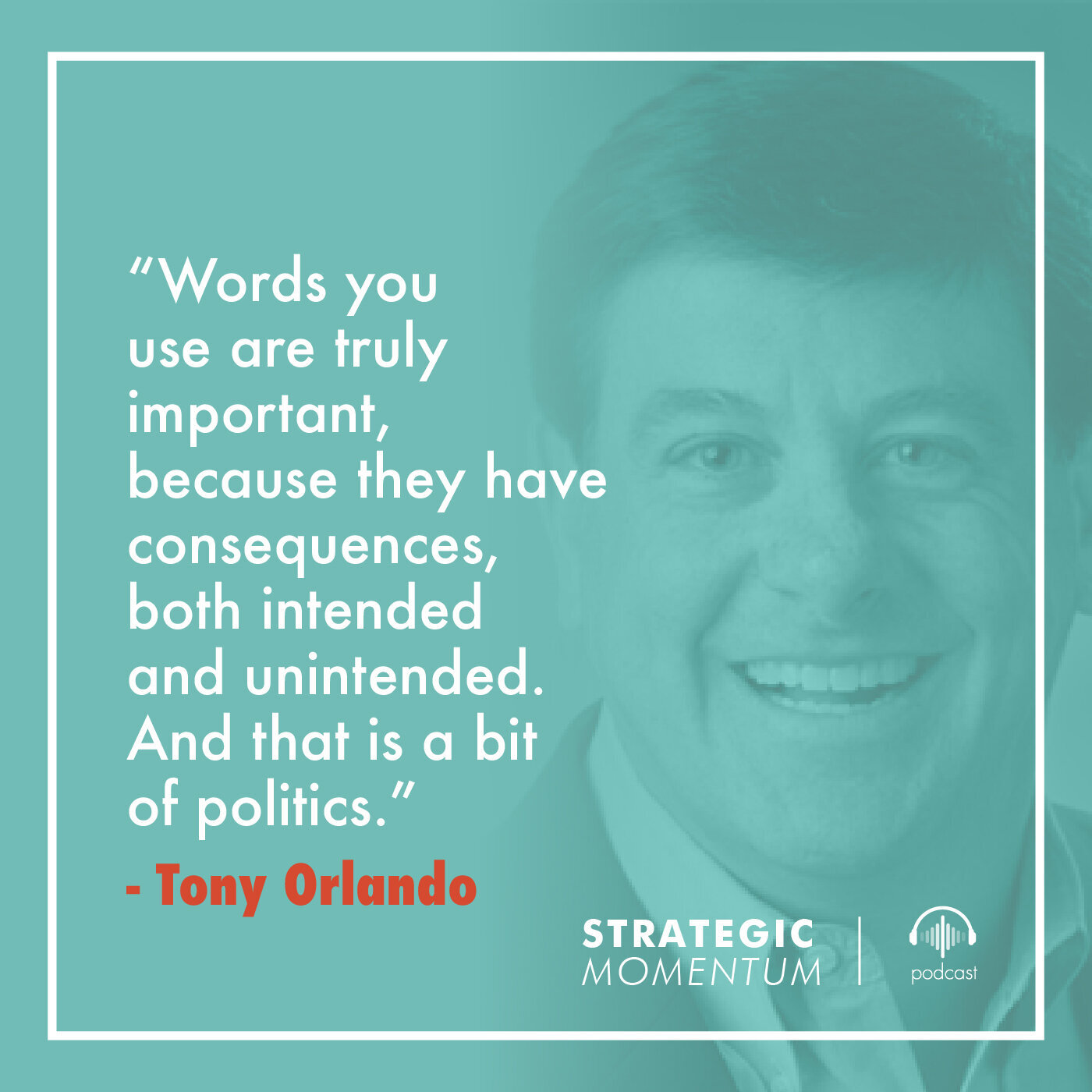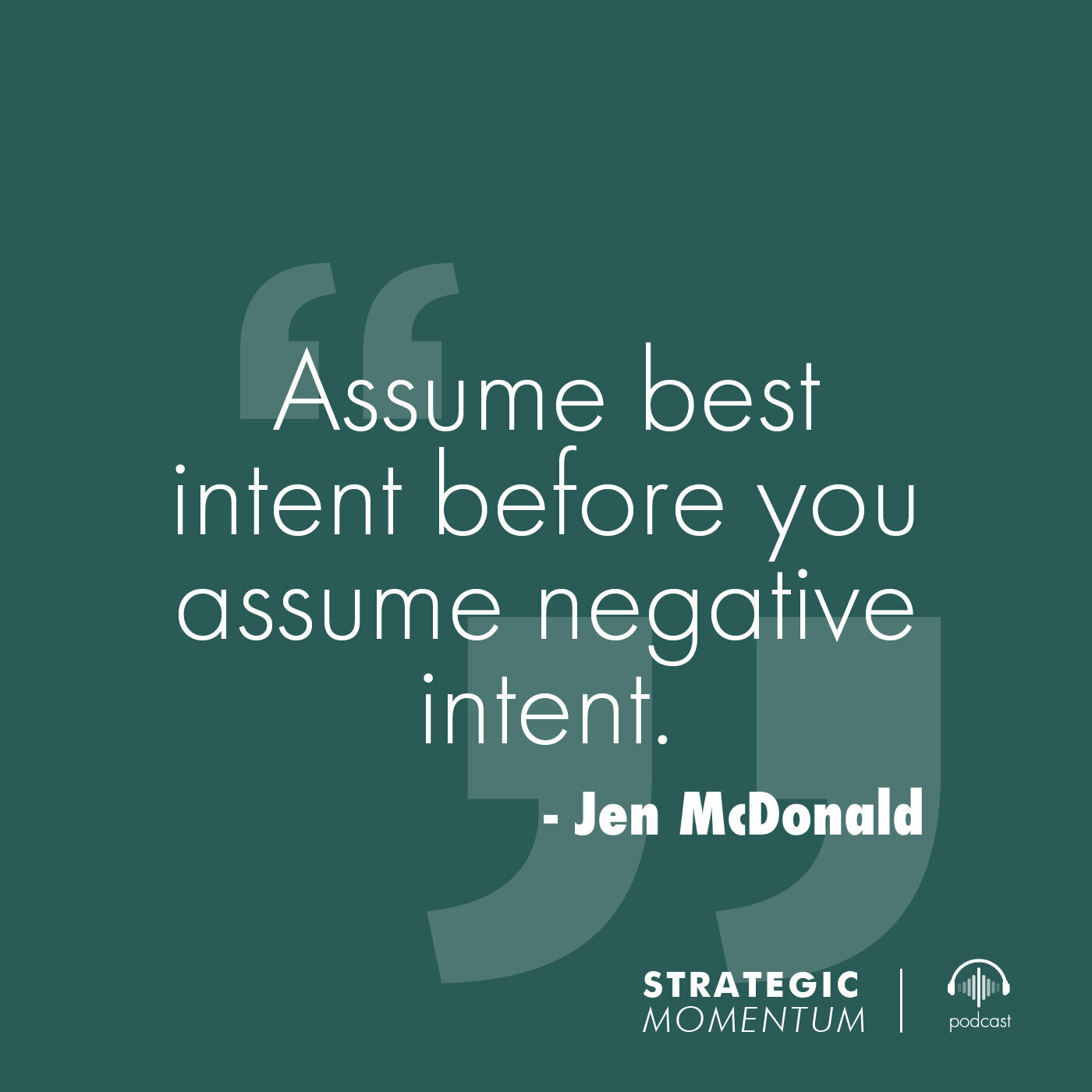Ep. 71 - Office Politics (Part 2): Learning to Manage and Master Political Maneuvering
Find Us Wherever You Listen To Podcasts
In this episode, we’re looking at what you can do to mitigate, manage, or navigate office politics more effectively.
In “Office Politics Part 1” (Ep. 68), a panel of business leaders joined me to share their individual experiences with and perspectives on politicking in the workforce. We started our conversation by digging into the positive and negative sides of office politics, plus the root causes of political behavior.
Today, the guests return to discuss what it takes to manage common political situations and how to build those skills that can help you anticipate and maneuver those tricky circumstances in the future.
In this episode, we are again joined by:
Kimberly Henning, SVP of Enterprise Payments at Bank of America;
Jennifer Trzepacz, Partner and COO of Wildcat Venture Partners
Jim Brady, Founder and CEO of Spirited Media Consulting
Preston Lewis, Founder and CEO of Intactic
Tony Orlando, Software executive and board member to several tech companies;
Jen McDonald, Chief Client Officer at VMLY&R Agency
This episode covers:
Defining office politics and how it plays out in various situations
Understanding power dynamics within the workplace hierarchy
Developing your emotional intelligence (EQ) to build better relationships
Creating a strategic plan to fall back on in political situations
To learn more about how one’s deep-seated emotions, plus power dynamics, leadership styles and rewards structures in an organization can lead to negative politics, check out Episode 68’s key takeaways here.
Understanding and Managing Power, People and Political Behavior
The ability to motivate others to act towards achieving a common goal leads to the success of a team, organization, or company — and that, technically, is politics.
By understanding the ecosystem in which decisions are made, you are then able to think through a strategic plan to help you address a problem. It becomes an exercise in determining what strategies and tactics will help you get to your end goal.
You can start to get your head wrapped around this web of relationships by first learning about power in the workplace and the impact it fundamentally has on people, behavior, culture, and even the work that gets done.
Power may be defined as the ability, capability, or right to control people or things — and when it comes to relationships, there is often a situation of power in the workplace. The effect that power plays in modern organizations depends on whether employees use the positive or negative type of power to control other employees. Oftentimes, the power plays and politics in an organization are all about being noticed and liked by the right people, in order to get the right promotions and influence at the right time.
Managing the power dynamics requires surveilling your entire environment first. When you're able to take a step back and look at all the players involved, then you’re able to see that not everyone has embodied this type of negative engagement. It just happens to be that, in that situation, they're all moving in a certain direction.
By assessing everything that influences the situation you’re in and understanding the root causes, you’ll gain greater clarity on what’s really happening. More importantly, you’ll be able to put together your own roadmap to better manage and maneuver the politics more effectively.
Key Takeaways:
Building your political competency is an important skill that you have to embrace — it’s part of how you have to navigate the workplace.
Realize there are some rules for appropriate individual behavior (e.g. not passing on rumors, gossiping) and interactions with others.
You can still “play the game” in a way that still aligns to your own value system and your integrity. One way is to participate in a way that shows advocacy for others.
Think of building your political skill like you are developing a strategic plan.
Work on understanding all of the different pieces involved and how they’re interconnected. Based on that, you then begin to build the foundation for a roadmap to your goals that is aligned with your values.
One way is to look at that situation and ask:
How can I look at this scenario as finite pieces first that help me digest and understand what I can and can’t do?
“How do I neutralize that in a positive, authentic way?”
Putting together the strategies and tactics that build your plan is not a check-the-box exercise because it isn't something that is immediately solved.
Creating Your Game Plan
To understand the game and map out a game plan, you have to start with the context first and foremost.
This involves getting your head around everything that impacts work situations — people, behaviors, objectives, priorities, measures of success, outcomes, culture, etc.
Spend time learning about all the players and subsequent power centers involved. Build relationships with them and get to know them as people.
Try to find out their motivators and drivers. Ask questions like...
What motivates them? What drives them? Who are they? Do they have a sense of humor? Are they dry? Is family the most important thing to them? Are they ultra-competitive? What are their objectives? What are they being measured on? What is it that they need to accomplish to make their bonus? Do they know what your goals are and what you need to accomplish them? Etc.
As part of your gameplan, also understand who carries more power in your org chart and who might carry less. You’ll discover who to speak to/influence because of their level of impact.
You’ll also learn whether certain people are even aware of what you need to accomplish as part of the work/activities that need to get done.
Make sure to ask clarifying questions as part of your context gathering process.
Think of this as leading through inquiry - what is your question set? And these questions can be really simple such as, “What are your priorities today?”
This helps to uncover potential misconceptions or lack of information on priorities or whether it was politically motivated to begin with or not.
You can dive into the unconscious drivers that people are living and working with in order to develop better and deeper relationships as well.
Once you have the right context, be aware of when is the right vs. wrong time to have a conversation.
Sense when there is receptivity vs. the likely reaction of defensiveness coming from an emotional point of view vs. an objective one
Part of realizing the right or wrong time can be done by ‘asking for permission’ to engage in a dialogue
Test your way via questions to determine if they are receptive to feedback.
You ultimately either have or don’t have permission at that point in time to share your perspective/thoughts/feedback.
When you decide to engage in the conversation, be mindful of the way you communicate (style of speech, language, vocabulary, etc.).
The words you use are truly important because they have consequences, both intended and unintended.
The right conversation at the wrong time is the wrong conversation. If you're sharing feedback around politics at the wrong time, don't have it and wait for another time.
Before interacting in a political situation, take a breath and just listen to what the other person(s) are saying and hear it outside of your own filter. If you start getting angry and take it personally, the odds that you're going to fix it go down
When speaking, be balanced. Don't be passive and don't be overly aggressive. Be professional in your actions. Stand up for yourself but do so respectfully and professionally.
In the end, you’re learning to anticipate the chess moves and create a contingency plan, while also creating a bridge with others to have more objective conversations.
Other Important Considerations and Positive Behaviors
Understanding Your Own Communication Style Through Self-Awareness
Be aware of and understand your communication preferences, skills, and styles. Once you acknowledge this and realize how it could positively or negatively affect others, it’s valuable to communicate your preferences to others. This minimizes misinterpretation of words and misperceptions of your actions.
e.g. If you know you have trouble with listening and empathy, you want to create an environment where it's safe to say, “You know what, I'm working on becoming a better listener. Let me just take a moment.”
Create a support network of colleagues that will support you in improving on anything you know that you need to improve upon.
If you're working with a leader or a manager that may not have that level of self-awareness, asking permission to give them feedback is, again, a crucial step to mitigate conflict.
Developing & Leveraging Your EQ to Better Understand People (and Their Actions)
EQ is being able to understand what's going on around you without processing it through your own insecurities and your own fears. It’s the ability to “read the room” without speaking.
Emotional intelligence helps you to be astute through observation and know instinctively and when it's the right or wrong time to speak up.
EQ is not something that you can read a book on and innately become emotionally intelligent - it comes from experience. Some tips how to learn it:
Be observant. Figure out what they are thinking based on their unspoken language. Make it a game and test your theory behind it. Think of it like an observational interview- look at their mannerisms and behaviors and connect that to their thoughts.
The more you test and learn in this fashion, the better you’ll be better at predicting and even anticipating an outcome based on somebody's body language, words, even style. That's how you can build this muscle.
In the end, if you are paying attention, you shouldn’t be completely surprised by the political activity that is happening around you.
Gaining Alignment of Objectives to Alleviate Politics
Get clarity around the business and project objectives as well as alignment. Then you can rally everyone around achieving those which can alleviate politics.
Sometimes the best way to do this is to focus on the end customer, If all of the teams can think of what is best for the customer and guide their actions in that direction, then there will be fewer opportunities for disagreement.
Find alignment around measures of success. Ask:
“What are your measures of success?
“What is your vision for success?”
“When we're done with this work and we look back on it, what do we want to be most proud of?”
Employing Positive Political Behaviors as a Leader
Understand that the way you behave and act is going to intentionally or unintentionally influence the rest of the organization.
As a leader, you have the ability to shape your team and demonstrate a different type of approach from those above you and stop the negative activity and consequences in its tracks.
If you are looking to really make an impact or a difference in your culture and address politics, you need to give permission to people at all levels in any role to feel comfortable to speak their mind and speak the truth at the right time.
Spend a little time with each and every person on your team. You’ll recognize who carries more power than their org chart would suggest and who might carry less.
You can map out who the power centers in your org - you’ll see who has has earned vs. inherited power.
It gives you insight into how information and ideas move through it.
How to Manage the Sticky Situations: Use Cases
Navigating Manager/Leader Conflicts
If your manager reflects the negative behavior that comes from the top or you have a challenging relationship with your boss
Understand the context from which the leader is operating from first.
Learn what their concerns are, what keeps them up at night, what their measures of success are, what their priorities are.
Ask for permission to have a discussion with them to it doesn’t shame them or make them feel uncomfortable in anyway
Before raising a concern, ask for permission to provide feedback. When you can use the right language and vocabulary to frame the conversation and create a safe context for the conversation, it's a lot easier. Ask:
“Can I give you some feedback?”
“Can I have permission to share some perspectives?”
Once you have permission to give feedback, you need to provide that feedback in the context of their situation and come from a place of good intention.
Ensure there is a value equation before giving feedback. You need to convey that you are helping them vs. just voicing feedback
Make sure you engage at the right time and think about the words you use.
Realize that your words as well the words your leaders use can create political complications because they can get misinterpreted. So it’s crucial for you to understand how the delivery of your intent gets translated. So be professional and have self-awareness as a leader and employee.
Managing Disagreements
If your boss wants you to do something and you don’t feel comfortable with it or don’t believe it is the right priority:
Lead with inquiry: Ask questions to understand the thinking behind the request or why was the decision made. For example:
“Well, can you give me a sense of what success looks like”
“Can you share with me what we often call might be the conditions of satisfaction?”
Use data to give back up your argument and give you influence.
Form alliances with other individuals if needed who have a similar viewpoint as you so that you can influence your manager together.
Don’t assume your manager is against you. When you communicate your ideas clearly and with data, you might find that you actually have some misconceptions about that person and might be delighted with the outcome.
In addition to building alliances, find a mentor — somebody else within the organization who also espouses the values that you believe in and that integrity. They don't need to be a formal mentor, simply someone whom you consider a trusted advisor who has some experience under their belt and who can help you navigate some of those situations.
Know that there will be situations where you won’t be able to change the circumstances, at which point you might have to make the decision to leave, particularly if you think by acting on what is being demanded of you impacts your integrity.
Dealing with Being Micromanaged
When we are being micromanaged, minimized (by your boss or other team members), or being maneuvered around:
The first step is awareness and introspection. Ask: was this really a political-motivated move by this individual or was there something that I could have done that would have made the situation something where I didn't feel like I was being minimized?
Then, understanding: “Can I understand what this person's motivation was? Are they trying to maximize their influence?”
Once you have the context, engage with the individual or the group of individuals.
It’s about letting that individual speak to the extent that they are willing to have the conversation with you and for you to listen.
Being Intentionally Undermined
Having a conversation once you get the context, realize the right timing and have thought about the right words to use to have a productive dialogue.
It’s best to tie it to an event/example so you can be specific about the behavior/action and subsequent outcome.








